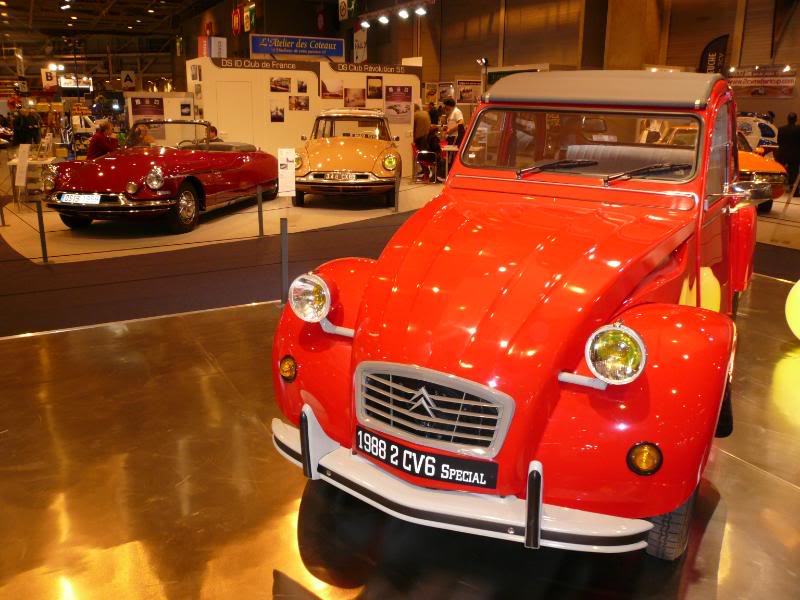Retromobile is the premier Classic Car held in France, and it is open for more than a week. I spent an entire day there on Monday, queuing up for a ticket before the show opened, and was one of the last to leave, at 7pm in the evening. Although nothing like as large as the NEC Show held in November, there was more than enough to keep me interested for that length of time, and the camera was very busy recording some – but by no means all – of the exhibits. I chose to go not on a weekend, thinking the show would be quieter, but it filled up very quickly, and for a couple of hours felt crowded. Later it did quieten down enough to be able to enjoy all that was on offer. Like most classic car shows, the exhibits comprised a mix of static displays from numerous car clubs, a few stands of vehicles for sale, largely through some of the big auction houses (Bonhams was the most evident of these), and an autojumble area. This last had large number of stands with vast arrays of superb models, worth huge sums of money, and which must have taken ages to set up. How I managed to resist buying anything at all is a mystery even to me, but somehow I did! So, on to the cars, which I have grouped by manufacturer.
CITROEN A big set of displays, here, as you would expect. 2008 marks the 60th anniversary of the 2CV, so there was a special focus on this car, both on the complex of Citroen stands, and also distributed throughout the show.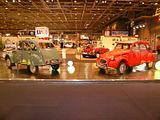 One of the oldest cars in the display was this one from 1950, complete with the canvas roof going back all the way to provide a cover for the boot:
One of the oldest cars in the display was this one from 1950, complete with the canvas roof going back all the way to provide a cover for the boot: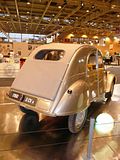

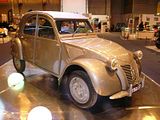 By the mid 60s, the model had evolved a little, to this version:
By the mid 60s, the model had evolved a little, to this version: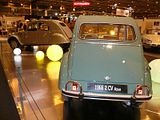
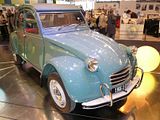 And late in the model’s life, it still looked very similar. This was a 1989 model:
And late in the model’s life, it still looked very similar. This was a 1989 model: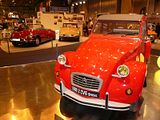
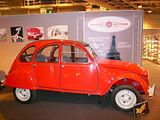
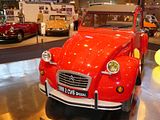
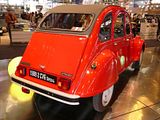 For a few years, in the 1950s, 2CVs were assembled at Slough, and this example is one of the first three that emerged. It is believed to be the oldest survivor of the Slough built cars:
For a few years, in the 1950s, 2CVs were assembled at Slough, and this example is one of the first three that emerged. It is believed to be the oldest survivor of the Slough built cars: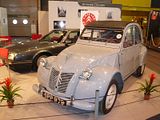 Elsewhere in the show was a factory fresh model, with just 16km on the odometer
Elsewhere in the show was a factory fresh model, with just 16km on the odometer
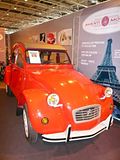 Popular also, especially in France, was the van version, and this beautifully restored van version, in French PTT livery used to be a common sight:
Popular also, especially in France, was the van version, and this beautifully restored van version, in French PTT livery used to be a common sight: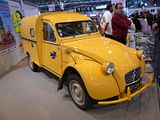 2008 marks the 40th anniversary of a derivative, called the Mehari, and one example of this was on show:
2008 marks the 40th anniversary of a derivative, called the Mehari, and one example of this was on show: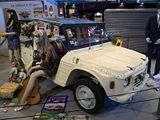 A number of other Citroens were also on display, as you would expect, and also well represented was the DS range, which stunned the world when it was launched at the Paris Show in 1955. It is still a supremely elegant looking car now, and I have fond memories of being taken to school in a rather unreliable ID19 Safari, which had it been preserved would be worth a lot now. This model from 1959 has just been restored – like many of the show’s exhibits – after being abandoned for a long time, with a lengthy rebuild and a lot of money expended in the process
A number of other Citroens were also on display, as you would expect, and also well represented was the DS range, which stunned the world when it was launched at the Paris Show in 1955. It is still a supremely elegant looking car now, and I have fond memories of being taken to school in a rather unreliable ID19 Safari, which had it been preserved would be worth a lot now. This model from 1959 has just been restored – like many of the show’s exhibits – after being abandoned for a long time, with a lengthy rebuild and a lot of money expended in the process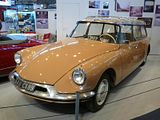 The various “decapotable” models are now worth big sums of money, and it’s not hard to see why.
The various “decapotable” models are now worth big sums of money, and it’s not hard to see why.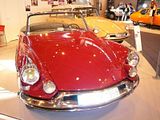
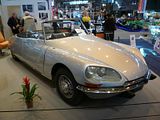 One of the later models was this one, a DS23:
One of the later models was this one, a DS23: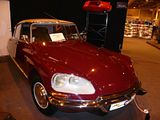 A couple more “Godesses”, to enjoy:
A couple more “Godesses”, to enjoy:
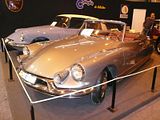
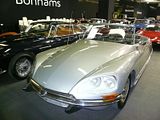 In many ways even more startling than the DS, was the SM, that was launched in 1970. Although many people are still worried by the complexity of these machines, their true value is starting to be seen, and appreciated:
In many ways even more startling than the DS, was the SM, that was launched in 1970. Although many people are still worried by the complexity of these machines, their true value is starting to be seen, and appreciated: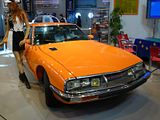
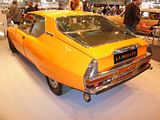
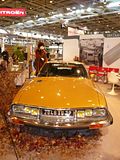 This convertible was created in 1991:
This convertible was created in 1991: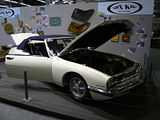 The third most emblematic model range for Citroen must be the long running Traction Avant range, and several of these were on show, as well.
The third most emblematic model range for Citroen must be the long running Traction Avant range, and several of these were on show, as well.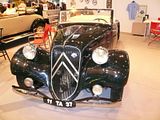

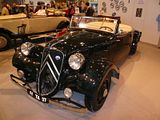
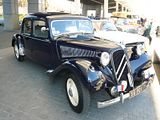 Predating this range, was the C4 Rosalie model, a staple of the 1920s model offerings:
Predating this range, was the C4 Rosalie model, a staple of the 1920s model offerings: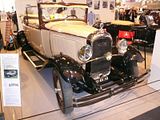 Equally well known as some of the cars are the vans. This fantastic Model H van, with period restoration was on display outside
Equally well known as some of the cars are the vans. This fantastic Model H van, with period restoration was on display outside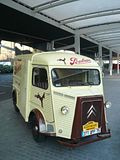

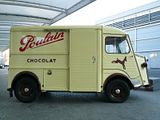
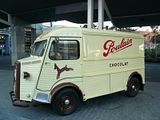 A real rarity was this, a prototype Model G van, which was a smaller version of the Model H. Endowed with just a 475cc engine, I doubt that a fully laden van would have been able to tailgate drivers of Traction Avants or DS in the way that current vans can:
A real rarity was this, a prototype Model G van, which was a smaller version of the Model H. Endowed with just a 475cc engine, I doubt that a fully laden van would have been able to tailgate drivers of Traction Avants or DS in the way that current vans can: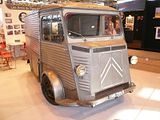 And finally for Citroen, a lone CX model on display. Originally sold in the UK, hence the right hand drive, the 1987 model found its way back to France some time ago.
And finally for Citroen, a lone CX model on display. Originally sold in the UK, hence the right hand drive, the 1987 model found its way back to France some time ago.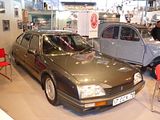 PEUGEOT This was the first grouping of cars that greeted arrivals to the show. Pride of place went to one of the star vehicles from Peugeot’s own “Aventure Peugeot” collection, a 184 model.
PEUGEOT This was the first grouping of cars that greeted arrivals to the show. Pride of place went to one of the star vehicles from Peugeot’s own “Aventure Peugeot” collection, a 184 model.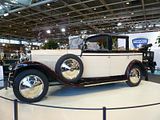
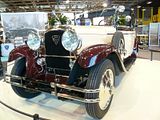 Also represented from Peugeot’s own collection were a number of early models. This one dates from 1897:
Also represented from Peugeot’s own collection were a number of early models. This one dates from 1897: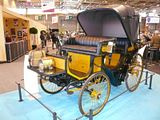 This one from 1906:
This one from 1906: And these two from a few years later:
And these two from a few years later: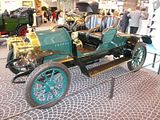
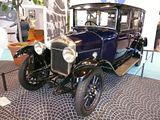 A number of model-specific Peugeot clubs had cars on display, too, and here are a sample:The 301:
A number of model-specific Peugeot clubs had cars on display, too, and here are a sample:The 301: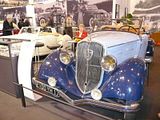
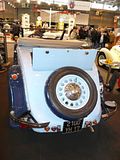 The 402, in sporting Darlmat guise:
The 402, in sporting Darlmat guise: Post war, the main stay of the range from 1950 was the 203. Two different open top models were shown:
Post war, the main stay of the range from 1950 was the 203. Two different open top models were shown: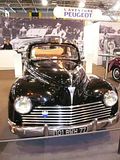
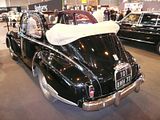
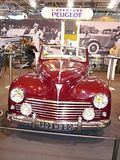 The 203 was followed up with a larger car, the 403, which appealed to the Bourgeoisie of France in the late 1950s and early 1960s Here is the saloon:
The 203 was followed up with a larger car, the 403, which appealed to the Bourgeoisie of France in the late 1950s and early 1960s Here is the saloon:
 and here is the 403 convertible:
and here is the 403 convertible:
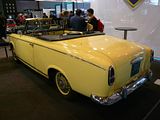 1960 saw the launch of the Farina styled 404. This was quickly followed by very elegant coupe and convertible models. This car, dating from 1967 was a second generation car with Kugelfischer fuel injection
1960 saw the launch of the Farina styled 404. This was quickly followed by very elegant coupe and convertible models. This car, dating from 1967 was a second generation car with Kugelfischer fuel injection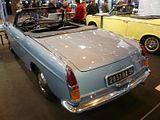
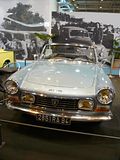 Equally elegant were the next generation models, the 504, with this late model cabriolet to admire
Equally elegant were the next generation models, the 504, with this late model cabriolet to admire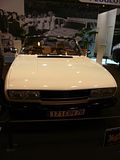
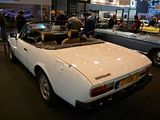 Rather different was the 104, launched in 1972, and at the time one of the smallest four door saloon cars on the market, made even smaller in the short wheelbase Coupe models, such as this one:
Rather different was the 104, launched in 1972, and at the time one of the smallest four door saloon cars on the market, made even smaller in the short wheelbase Coupe models, such as this one: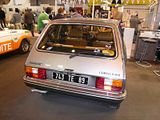 One of my favourite luxury saloons from the 70s was the very elegantly under-stated 604. This model is a special Chapron trimmed car, from 1981, which combined the Ti engine with plusher trim and a wooden dashboard.
One of my favourite luxury saloons from the 70s was the very elegantly under-stated 604. This model is a special Chapron trimmed car, from 1981, which combined the Ti engine with plusher trim and a wooden dashboard.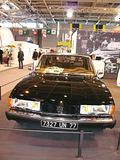
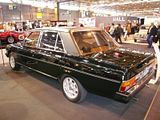 Away from the main Peugeot stand area, there were a few other models. This 202 model looked rather neat, with its advanced aerodynamic styling being something of a radical departure for the mid 30s
Away from the main Peugeot stand area, there were a few other models. This 202 model looked rather neat, with its advanced aerodynamic styling being something of a radical departure for the mid 30s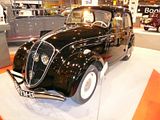
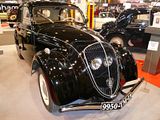 Peugeots have also long been used as workaday vehicles, as exemplified by this 403 pickup:
Peugeots have also long been used as workaday vehicles, as exemplified by this 403 pickup: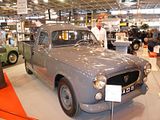 During the second World War, materials were in short supply, so simpler styling had to be adopted, to create some utility vehicles needed to support the war effort. Under German occupation, Peugeot come up with this rather utilitarian workhorse, the DMA, which was displayed in an unrestored condition, as you can see.
During the second World War, materials were in short supply, so simpler styling had to be adopted, to create some utility vehicles needed to support the war effort. Under German occupation, Peugeot come up with this rather utilitarian workhorse, the DMA, which was displayed in an unrestored condition, as you can see.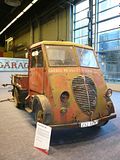 An example of the luxury 601 model, dating from the early 30s was included in Bonhams; auction, and this car appeared to have been sold, but no price was quoted:
An example of the luxury 601 model, dating from the early 30s was included in Bonhams; auction, and this car appeared to have been sold, but no price was quoted: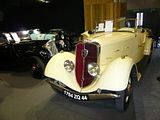
 RENAULT Rather surprisingly, there was no specific Renault display at all. My eye was caught by this car, on display outside the show. An R12 Gordini:
RENAULT Rather surprisingly, there was no specific Renault display at all. My eye was caught by this car, on display outside the show. An R12 Gordini: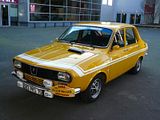
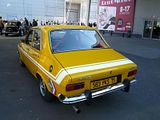 This 1966 model Caravelle, in period display had a particular allure:
This 1966 model Caravelle, in period display had a particular allure: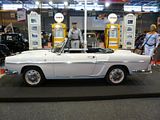
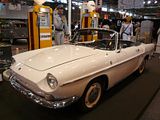
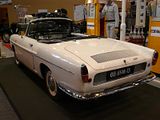 The same display, part of a sizeable private collection, included a 4CV model:
The same display, part of a sizeable private collection, included a 4CV model: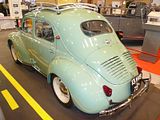
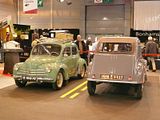 Renault built an early reputation for motor sporting success, with racers such as this one:
Renault built an early reputation for motor sporting success, with racers such as this one: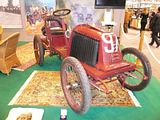 However, as the Renault product proposition expanded, a wider range of vehicles were added to their portfolio, as this touring coach exemplifies:
However, as the Renault product proposition expanded, a wider range of vehicles were added to their portfolio, as this touring coach exemplifies: An early AX model:
An early AX model: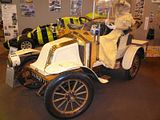 By the late 20s, Renault had added to their range, to include these massive beasts, the 40 CV:
By the late 20s, Renault had added to their range, to include these massive beasts, the 40 CV:
SIMCA Only a very small Simca stand, perhaps reflecting the fact that this marque is held in far lower esteem than the other major French manufacturers. In its day, though, the Simca 1000 Rallye was quite a performance bargain, and challenge, with its rear engine and interesting handling characteristics.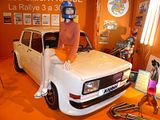 More basic models sold very well in the early 1960s, This is a 1966 model:
More basic models sold very well in the early 1960s, This is a 1966 model: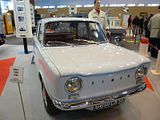
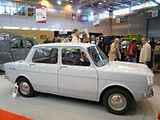 In the 50s, Simca had a range of larger cars, very much based on American styling fashions of the era. This is a 1957 model Vedette Versailles:
In the 50s, Simca had a range of larger cars, very much based on American styling fashions of the era. This is a 1957 model Vedette Versailles: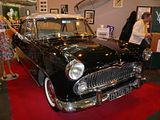
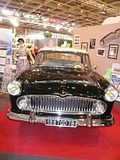 Several of the lesser known, and long since obsolete French marques were also presented, and here are a selection:AMILCAR Known for making “cycle cars” that were actually quite sporting to drive, in the 1920s:
Several of the lesser known, and long since obsolete French marques were also presented, and here are a selection:AMILCAR Known for making “cycle cars” that were actually quite sporting to drive, in the 1920s: HOTCHKISS This family saloon dates from the early 1950s
HOTCHKISS This family saloon dates from the early 1950s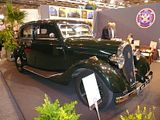 PANHARD An early entrant onto the motoring scene, this splendid Panhard and Levassor was up for auction, and was expected to fetch a sizeable sum of money:
PANHARD An early entrant onto the motoring scene, this splendid Panhard and Levassor was up for auction, and was expected to fetch a sizeable sum of money: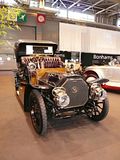 By the 1930s, the offerings were less overtly ostentatious, as this car evidenced
By the 1930s, the offerings were less overtly ostentatious, as this car evidenced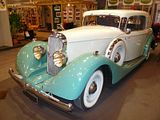
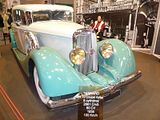 After the second world war, Panhards had become much more affordable, but traded on advanced engineering. This Dyna model dates from 1953:
After the second world war, Panhards had become much more affordable, but traded on advanced engineering. This Dyna model dates from 1953: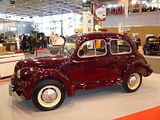
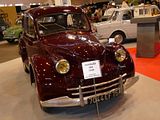
 More sporting models were also included in the range, and this car was recently discovered after 20 years inactivity:
More sporting models were also included in the range, and this car was recently discovered after 20 years inactivity: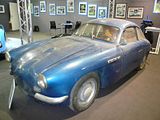 DELAHAYE The Delahaye stand made much of the marque’s 1- 2 win in 1938 at Le Mans:
DELAHAYE The Delahaye stand made much of the marque’s 1- 2 win in 1938 at Le Mans:
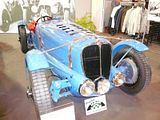
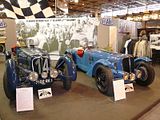 Immediately after the second world war, Delahaye made a series of these expensive luxury coupes:
Immediately after the second world war, Delahaye made a series of these expensive luxury coupes:
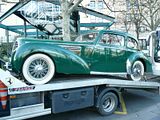
FACEL VEGA There were a couple of these at the show, but I failed to photo them. However, this model was in the lobby of my hotel – a rather ordinary Hotel Mercure. I’m not sure whether it is a permanent fixture or simply there for the duration of the exhibition.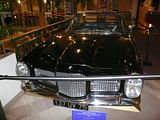
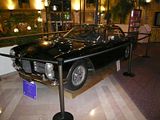
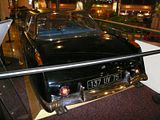 TALBOT Known in the 30s for the supply of luxury, sporting and expensive elegant cars, these cars illustrated that point particularly well:
TALBOT Known in the 30s for the supply of luxury, sporting and expensive elegant cars, these cars illustrated that point particularly well: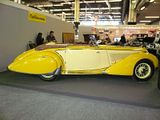
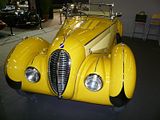
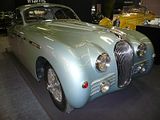
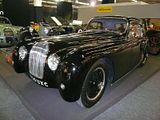 Sneakily located among the Peugeots was this model:
Sneakily located among the Peugeots was this model: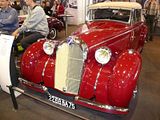 BONET An all but unknown marque, this car, the DB, was an unsuccessful attempt to offer something a little different in the late 50s
BONET An all but unknown marque, this car, the DB, was an unsuccessful attempt to offer something a little different in the late 50s
BUGATTI Surprisingly few of these cars on show, and virtually all them were in the auction areas of the displays: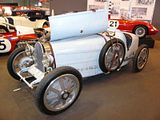
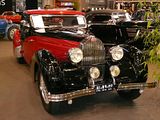
 Type 57 Stelvio model:
Type 57 Stelvio model: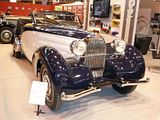 That concludes the French cars. Next come some of the other nationalities.LANCIA A small stand, with just 2 cars on it. Both were original model Delta cars, a 1600 GTie and an early HF 4WD
That concludes the French cars. Next come some of the other nationalities.LANCIA A small stand, with just 2 cars on it. Both were original model Delta cars, a 1600 GTie and an early HF 4WD
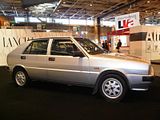
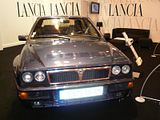
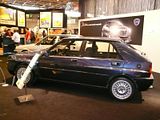 On a separate stand was the rarely seen Fulvia Berlina, a technically advanced small saloon for its day
On a separate stand was the rarely seen Fulvia Berlina, a technically advanced small saloon for its day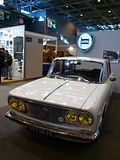
 One of the cars up for auction was this Aurelia 2500 GT Coupe. Widely thought to be the first car to be called a “GT”, these cars are starting to gain in popularity, and prices are rising accordingly Lancia built up an enviable reputation for advanced engineering many years ago, largely on the strength of the Lambda model.
One of the cars up for auction was this Aurelia 2500 GT Coupe. Widely thought to be the first car to be called a “GT”, these cars are starting to gain in popularity, and prices are rising accordingly Lancia built up an enviable reputation for advanced engineering many years ago, largely on the strength of the Lambda model.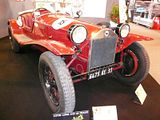 ALFA ROMEO Three cars were on the Alfa Owners Club stand, all of them unusual. First up was this Giulietta Sprint Speciale, dating from 1963
ALFA ROMEO Three cars were on the Alfa Owners Club stand, all of them unusual. First up was this Giulietta Sprint Speciale, dating from 1963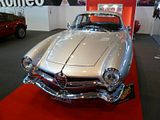 The GT Junior Zagato is rare in its own right, but this was a special prototype vehicle
The GT Junior Zagato is rare in its own right, but this was a special prototype vehicle Equally unusual, was this Sprint based 6C model, Only two were built
Equally unusual, was this Sprint based 6C model, Only two were built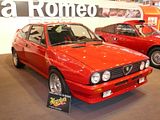
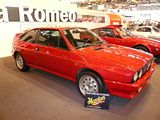 There was an “ordinary” GT Junior Zagato on offer, for 20,000 Euros. It was tempting.
There was an “ordinary” GT Junior Zagato on offer, for 20,000 Euros. It was tempting.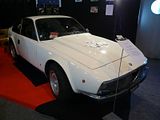 Even more desirable, perhaps, is this 1964 Giulia Spider
Even more desirable, perhaps, is this 1964 Giulia Spider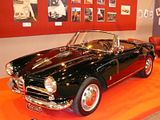 The Coupe version was always a stunner, and performed well, despite only having a 1290cc engine
The Coupe version was always a stunner, and performed well, despite only having a 1290cc engine Until after the second world war, Alfa did not really make true road cars, but that changed with the 6C 2500 cars, launched in 1948, and a few of these were on offer for auction
Until after the second world war, Alfa did not really make true road cars, but that changed with the 6C 2500 cars, launched in 1948, and a few of these were on offer for auction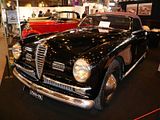 The follow on model was the 1900 series, which came in saloon and coupe versions.
The follow on model was the 1900 series, which came in saloon and coupe versions.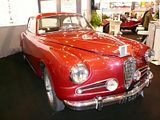 FIAT Not surprisingly, the 500 was the feature on the Fiat Owners stand, with 3 different models on show, one of which was actually the rare Abarth 595 model
FIAT Not surprisingly, the 500 was the feature on the Fiat Owners stand, with 3 different models on show, one of which was actually the rare Abarth 595 model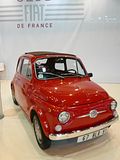
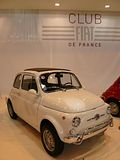 Those who wanted a slightly bigger car in the 1960s frequently bough an 850, and the Coupe was particularly stylish. Few survive, though I do recall enjoying seeing one at Gaydon last September.
Those who wanted a slightly bigger car in the 1960s frequently bough an 850, and the Coupe was particularly stylish. Few survive, though I do recall enjoying seeing one at Gaydon last September. In the 1930s, Fiat had a small sports car called the Ballila. I had only ever seen 2 seater sport versions, so found this body style something of a surprise
In the 1930s, Fiat had a small sports car called the Ballila. I had only ever seen 2 seater sport versions, so found this body style something of a surprise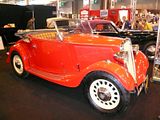 Even more unusual was this sporting offering from the 1930s. It was fenced off in the auction area, so hard to examine closely
Even more unusual was this sporting offering from the 1930s. It was fenced off in the auction area, so hard to examine closely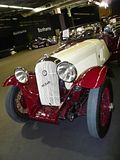
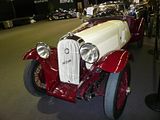 ISO The Grifo is well known, even though not that many of these Chrysler engined cars were produced. What is less well known is that 14 targa models were made – definitely not a car I have ever seen before.
ISO The Grifo is well known, even though not that many of these Chrysler engined cars were produced. What is less well known is that 14 targa models were made – definitely not a car I have ever seen before.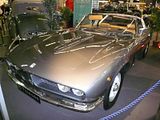 LAMBORGHINI The Owners Club stand had just two cars on it. A Miura and a Miura SV. This latter, dating from 1971, is particularly rare.
LAMBORGHINI The Owners Club stand had just two cars on it. A Miura and a Miura SV. This latter, dating from 1971, is particularly rare.
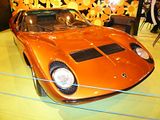
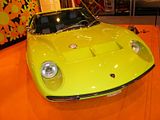 Also dating from the early 1970s is the 4 seater Jarama. Not entirely convinced this is the “best” colour for such a car:
Also dating from the early 1970s is the 4 seater Jarama. Not entirely convinced this is the “best” colour for such a car: FERRARI A few Ferraris were on show, mostly offered for sale. The 308 GTB
FERRARI A few Ferraris were on show, mostly offered for sale. The 308 GTB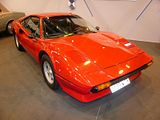 A rather nice 250 GT. Whenever I see these cars, I am always surprised to learn that this design dates from as far back as 1960.
A rather nice 250 GT. Whenever I see these cars, I am always surprised to learn that this design dates from as far back as 1960.
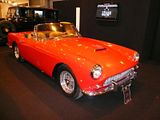 The 250GTE followed on, and is also a surpremely attractive car.
The 250GTE followed on, and is also a surpremely attractive car.
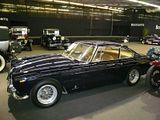 This pair of racing cars was also on show, offered for sale, doubtless with very large price tags:
This pair of racing cars was also on show, offered for sale, doubtless with very large price tags: MASERATI This 250F, from 1957, is the actual car driven by Fangio.
MASERATI This 250F, from 1957, is the actual car driven by Fangio.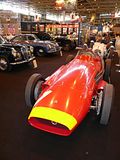 Those with slightly lesser budgets could perhaps avail themselves of one of these cars from the early 60s:
Those with slightly lesser budgets could perhaps avail themselves of one of these cars from the early 60s: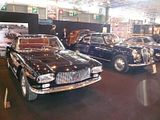
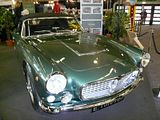 MERCEDES-BENZ Mercedes had their own official stand. Only three cars were on it, though! A W113 Pagoda model – still one of the nicer convertibles that they have ever offered:
MERCEDES-BENZ Mercedes had their own official stand. Only three cars were on it, though! A W113 Pagoda model – still one of the nicer convertibles that they have ever offered: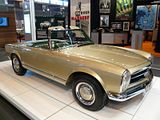
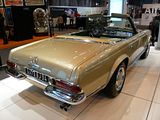 This rather earlier car was attracting a lot of interest from the show-go-ers
This rather earlier car was attracting a lot of interest from the show-go-ers Taking pride of place on an auction stand all by itself was this 1928 S-Type. It also had a large sticker advising that it had been sold, for the staggering price of 2.7 million Euros
Taking pride of place on an auction stand all by itself was this 1928 S-Type. It also had a large sticker advising that it had been sold, for the staggering price of 2.7 million Euros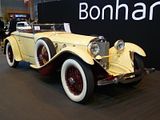 Not sporting the same sign, but doubtless with hopes that it would do so, was this one:
Not sporting the same sign, but doubtless with hopes that it would do so, was this one: Mercedes has long had a mix of offerings, including commercial vehicles, and parked up outside was a 1930s lorry.
Mercedes has long had a mix of offerings, including commercial vehicles, and parked up outside was a 1930s lorry.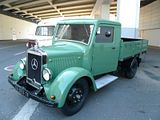 From the same decade was one of the high end sports cars, an SSK.
From the same decade was one of the high end sports cars, an SSK.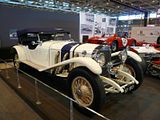 By the 1950s, the sporting offering was the 300SL. Initially this model came with the famous Gullwing doors, but later a convertible such as this one was offered:
By the 1950s, the sporting offering was the 300SL. Initially this model came with the famous Gullwing doors, but later a convertible such as this one was offered: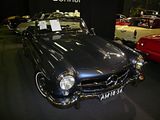
PORSCHE Very few Porsches in the show. There was a 904 on Porsche’s own stand, but although I recall admiring it, and pointing the camera at it, I do not appear to have taken the picture! I did capture these two, though: A 356 A 1972 911S:
A 1972 911S: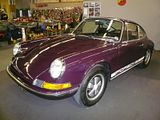 ADLER At least, that’s what I think this is. It was in the auction area, and roped off, so the picture was taken with a long zoom. Adler was an early convert to front wheel drive, offering cars like this in the 1930s. They were absorbed by Auto Union, and hence Audi.
ADLER At least, that’s what I think this is. It was in the auction area, and roped off, so the picture was taken with a long zoom. Adler was an early convert to front wheel drive, offering cars like this in the 1930s. They were absorbed by Auto Union, and hence Audi.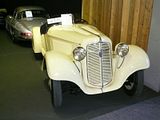
BMW This stand was next to Peugeot, and also greeted visitors to the show. Sadly, there were only three cars on it! An M1 Procar: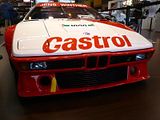 A racing 3 series, of the first, E21 generation
A racing 3 series, of the first, E21 generation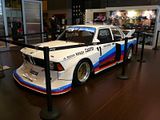 An E30 model M3:
An E30 model M3: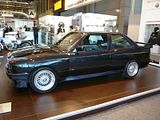
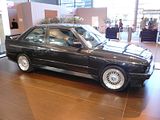
MINI Sharing the other end of the BMW stand was Mini. Both cars purported to be from the 60s, but seemed to have been slightly inaccurately restored with many detailed parts coming from 70s models: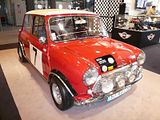
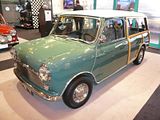
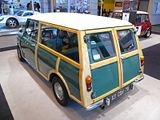 ROVER Just two cars here, and both them somewhat unusual. The Twelve model, from the late 30s is more commonly encountered as a saloon, but here was a convertible model
ROVER Just two cars here, and both them somewhat unusual. The Twelve model, from the late 30s is more commonly encountered as a saloon, but here was a convertible model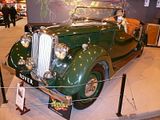 A definite one off was this one………. Judge Dredd’s car:
A definite one off was this one………. Judge Dredd’s car: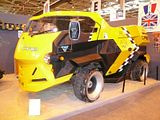 FORD Surprisingly, just a single Ford in the entire show – this Lotus Cortina
FORD Surprisingly, just a single Ford in the entire show – this Lotus Cortina LOTUS An early Elan. Whenever I see one of these, it looks so small. Perhaps that is because it actually is very small!
LOTUS An early Elan. Whenever I see one of these, it looks so small. Perhaps that is because it actually is very small! An Eleven
An Eleven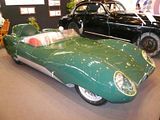 ROLLS ROYCE and BENTLEY Even by the standards of todays large cars, this early model Rolls is a tall car!
ROLLS ROYCE and BENTLEY Even by the standards of todays large cars, this early model Rolls is a tall car! As proportions changed, although this Phantom is not on the small side either, it looks less obviously massive
As proportions changed, although this Phantom is not on the small side either, it looks less obviously massive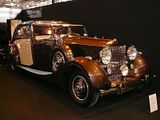 An unusual Hooper body was fitted to this Silver Cloud dating from 1956
An unusual Hooper body was fitted to this Silver Cloud dating from 1956 There was a Bentley Continental R on show, but it was hemmed in such a way that defied photography, so I had to content myself with its saloon brother
There was a Bentley Continental R on show, but it was hemmed in such a way that defied photography, so I had to content myself with its saloon brother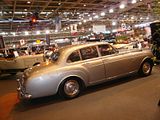
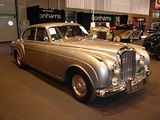
ASTON MARTIN Only a few of these well-regarded cars on display, too. Again, largely with “for sale” tickets in evidence.DBR3: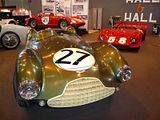 DB4:
DB4: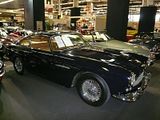
JAGUAR A large number of Jaguars were scattered through the display areas. Most of them were for sale, and they were largely drawn from the late 1950s. Here are just some: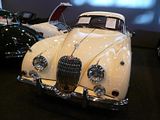
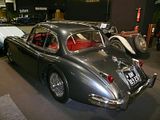
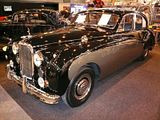
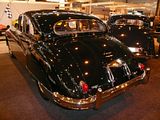
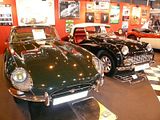
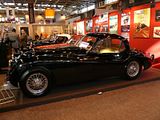
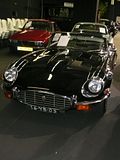 AMERICAN CARS 1959 Chrysler New Yorker Wagon
AMERICAN CARS 1959 Chrysler New Yorker Wagon 1964 Mustang
1964 Mustang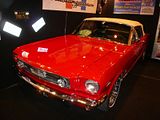 1963 Corvette Stingray
1963 Corvette Stingray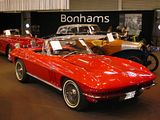 A couple of Chevrolet Panel Vans
A couple of Chevrolet Panel Vans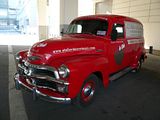
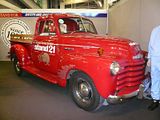 late 70s Cadillac Seville
late 70s Cadillac Seville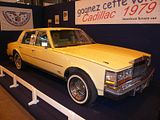 This Auburn Speedster actually comes from the National Motor Museum at Beaulieu, and had been shipped over to populate their stand
This Auburn Speedster actually comes from the National Motor Museum at Beaulieu, and had been shipped over to populate their stand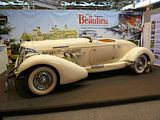
HONDA Sole Japanese manufacturer at the event was Honda, who were celebrating 60 years of car making, with a 3 car display comprising the S800, a first generation Civic, and the Z Coupe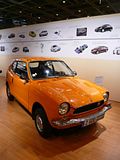
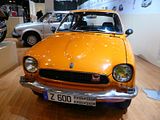
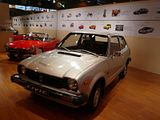
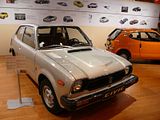 VOLGA Not included inside the halls, but on display outside was this 1969 model.
VOLGA Not included inside the halls, but on display outside was this 1969 model. And finally………. Not a car, but this was included in the displays, and is definitely something very unusual. The Aero Train was developed at the end of the 1960s, as an attempt to provide the sort of very high speed rail travel that was then made a reality with the TGV. It ran on its own special concrete track lines. Needless to say, it was not a success!
And finally………. Not a car, but this was included in the displays, and is definitely something very unusual. The Aero Train was developed at the end of the 1960s, as an attempt to provide the sort of very high speed rail travel that was then made a reality with the TGV. It ran on its own special concrete track lines. Needless to say, it was not a success!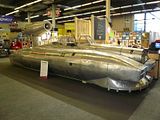
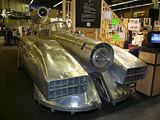 In summary, then, a fascinating show, with a lot of different vehicles from a typical UK event, and well worth the visit.
In summary, then, a fascinating show, with a lot of different vehicles from a typical UK event, and well worth the visit.2009-12-28 08:47:44




































































































































































































